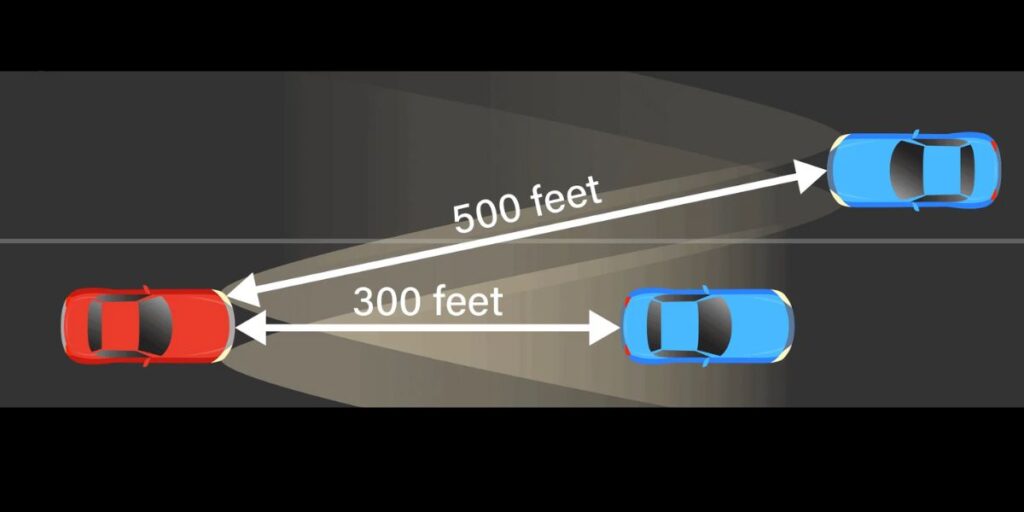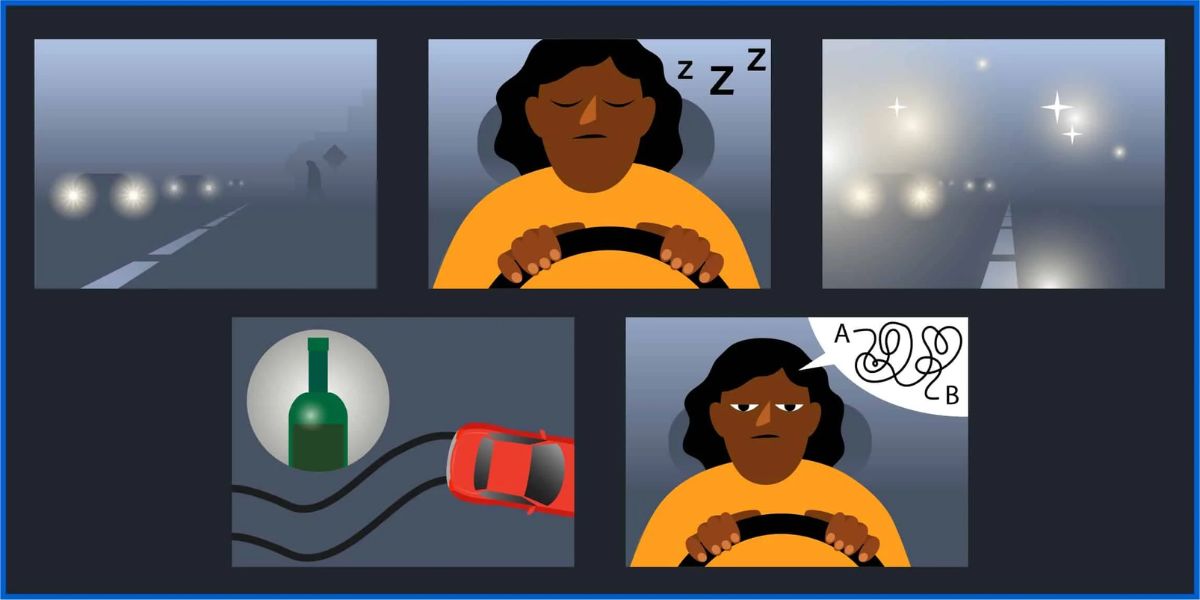California has pleasant weather all year long, making nighttime driving enjoyable. However, auto accidents and near-accidents, many of which involve headlight problems, frequently interrupt it.
For instance, you can get a sample of drivers in San Diego who use headlights or don’t use any at all by taking a quick evening drive.
As a driver, you probably want to know what California’s headlight usage regulations are.
Was that driver simply breaking the law? Would an accident make them liable?
Here are some frequently asked questions and a quick introduction. Please contact our vehicle accident lawyer for case-specific legal advice if you were in an accident where headlight use was involved.
California Headlight Regulations: What’s Needed, What’s Permitted, and What’s Not
California’s Mandatory Use of Headlights
A motor vehicle other than a motorcycle is required to have at least two headlamps under California Vehicle Code Section 24400.
When traveling in bad weather or in the dark, they must be activated. “Inclement weather” is defined by law as a weather condition that occurs when:
From a distance of 1,000 feet, the driver is unable to notice a person or another car on the roadway, OR
Rain, fog, snow, mist, or similar conditions force the driver to use their windshield wiper.
Additionally, some Californian roads require the usage of headlights during the day. These are typically roadways that are prone to crashes, like Highway 67 between Lakeside and Ramona, or mountain roads.
The California Highway Patrol enforces an obligatory rule when you see a black-and-white sign that reads “Daylight Headlight Section” or “Daytime Headlights Area.”
Headlight use is permitted at any time of day in other parts of California, depending on the driver’s preference. Running lights throughout the day may help lower the chance of head-on incidents and front-corner collisions, according to some research.
California Law Regarding Headlight Types and Installation
According to California Vehicle Code 25950, headlights must be mounted at a height of at least 22 inches and no more than 54 inches.
In addition, Section 25950 stipulates that all front lights must be either white or yellow. A driver’s front vision can be adequately illuminated by this color of light.
The California High Beams Law
Low beam headlights, which provide short to medium range lighting, are the “default” headlights that drivers utilize. High beams, which can shine twice as far as low beams, are placed on top of these.
High beams have the drawback of momentarily blinding pedestrians and other cars. Therefore, turning off high lights when not in use is standard courtesy everywhere.
This has been made a law in California. It is illegal to beam “glaring rays… into the eyes of an oncoming driver,” according to California Vehicle Code 24409.
When a car is approaching from within 500 feet or when a car is following them within 300 feet, drivers are required to turn off their high lights. In certain cases, only low beams are permitted.

The California Fog Lights Law
Additional lights positioned downward to illuminate the ground when driving in fog are known as fog lights. Although these are permitted in California, the following requirements are included in the state’s vehicle code:
- No more than two fog lamps may be turned on at once in a vehicle.
- Regular headlights must be used in conjunction with fog lamps, not in place of them.
- The color range of fog lights must be white to yellow.
- No more than eight headlamps may be installed on a vehicle at once.
- A car is not allowed to have more than four front lights on at once.
Additional Common Questions Regarding California Headlights
In California, how bright may your headlights be?
In California, headlights can have a maximum brightness of 2,513 lumens each.
Does California allow aftermarket LED headlights?
In California, aftermarket headlights—those you buy separately for your car—are acceptable. As long as they are white, have amber turn signals, and don’t exceed 2,513 lumens, LED headlights are also permitted.
In California, which light bulbs are prohibited?
California prohibits headlight bulbs with more than 2,513 lumens and lights that are not white or yellow in accordance with the aforementioned legislation.
In California, blue, purple, or red lights are prohibited as headlights, though they are occasionally installed as extras.
Is it legal to use HID lights in California?
The California Vehicle Code does not specifically prohibit high-intensity (HID) headlights. However, the brightness limit law and the white-yellow color law are strictly enforced by the California Highway Patrol.
Numerous aftermarket HID lights are available, and many of them—particularly the colorful ones—would be prohibited by California’s headlight regulations.
New Jersey’s Latest Law Could Make Driving Tougher for New Drivers – Here’s How!
What About Headlights on Motorcycles?
The California motorcycle headlight law is simply explained here. However, every rider is aware that when they equip their bike, staying visible and alive may be more important than following the law.
Every motorbike in California is required to have at least one headlight that is always in good operating order. Unless you have a bike that was produced before to January 1, 1978, that is.
When visibility is poor because to bad weather, fog, or other circumstances, the headlight must be turned on from dusk to morning.
According to California Vehicle Code Section 25651, a motorcycle’s headlight must reveal a pedestrian or an automobile at a distance of 100 feet when the rider is traveling at 25 mph or less, 200 feet when the rider is traveling between 25 and 35 mph, and 300 feet when the rider is exceeding 35 mph.
The primary or higher headlight must fulfill the aforementioned specifications if the motorcycle has more than one forward light (two are legally permitted).
Flashing Headlights in Maine: What it Really Means and Why You Should Be Careful!
In a headlight-related accident in California, who is at fault?
Headlight usage or non-use is a major factor in many car accidents. A few instances are:
- On a dark road, the driver failed to turn on their headlights.
- The driver’s headlights were either too dim or not as noticeable.
- Other drivers’ vision was hampered by the driver’s very bright headlights.
When these situations culminate in a collision that causes injuries, the driver who broke the headlight law may be held accountable for the associated damages.
This is due to the fact that in California, a driver who has been cited with a violation is deemed to be negligent (“negligence per se”), and accident culpability is determined by whose negligence caused the crash.
On the other hand, you might not get as much compensation for your injuries if you were the one hurt but your headlight malfunctioned.
The comparative negligence rule, which is applied in California, considers your own possible negligence and how it may have contributed to the collision.
For example, you can also receive a 40 percent reduction in compensation if you were determined to be 40 percent at blame for your headlight infraction.
After being hurt, it’s vital to speak with an accident lawyer right away, regardless of whose headlight is at fault. You can create a case to get the most money you are entitled to with the assistance of a skilled California personal injury attorney.







Leave a Comment